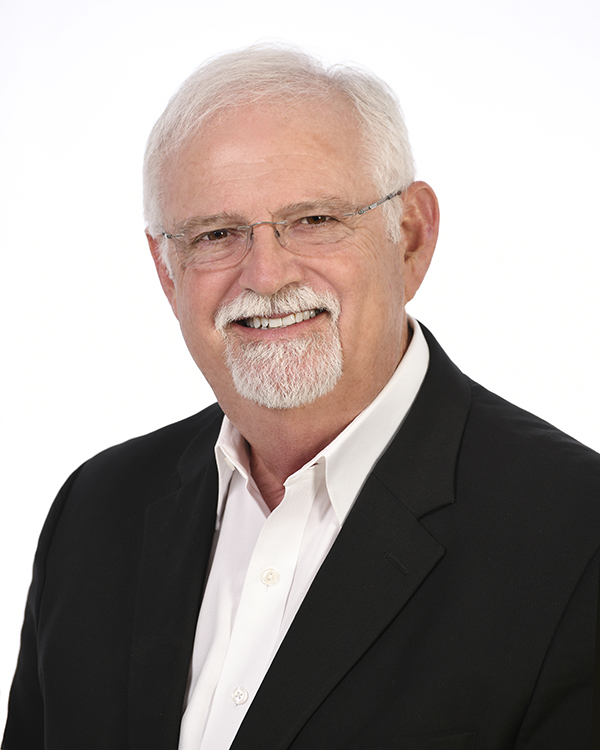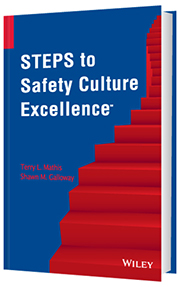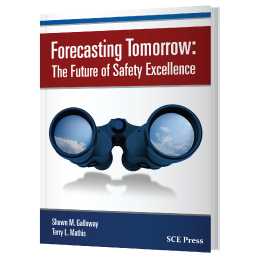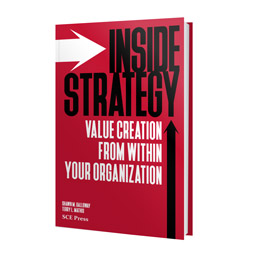
Terry is the founder and CEO (retired) of ProAct Safety®, an international safety and performance excellence firm. He is known for his dynamic presentations and writing in the fields of behavioral and cultural safety, leadership, and operational performance, and is a regular speaker at ASSE, NSC, and numerous company and industry conferences. He has been a frequent contributor to industry magazines for over 15 years and is the coauthor of STEPS to Safety Culture Excellence (WILEY, 2013).
“ I have heard a lot of speakers in my time but Mr. Terry has been one of the best ”Terry is a veteran of over 1600 safety, culture and performance improvement projects in 39 countries and 21 languages, and has personally assisted organizations such as Georgia-Pacific, Herman Miller, AstraZeneca, Wrigley, ALCOA, Merck, Rockwell Automation, AMCOL International, Ingersoll-Rand and many others to achieve excellence.
EHS Today has listed Terry three consecutive times as one of 'The 50 People Who Most Influenced EHS' from 2010 to 2013. SlipNOT's safety blog claims he "sets a new standard for safety success in the corporate world." Attendees at public safety conferences say he is "one of the best presenters in [the] past 3 years" and had "one of the best practical, grounded safety culture presentations. . . ever seen." Terry has presented over 40 webinars and podcasts, co-authored two books, published more than 45 articles, and spoken at hundreds of private and public events.
Links
|
Articles |
Events |

Videos |
Podcast |
|
|
|

Book |

Book |

Book |
Want Terry to Speak at Your Next Event?
Contact us for Terry's available dates, customized topics, speaker fees or help with planning your event. You may also visit Terry's author profile on Amazon for more information or to pre-purchase his new book, STEPS to Safety Culture Excellence
Most Popular Topics
List of Talk Topics & Descriptions
-
Teaching Supervisors to be Safety Coaches:
Supervisors influence worker behavior perhaps more than any other level in an organization. Yet most supervisors have not received formal training on coaching and effective performance feedback skills. Supervisors are in a unique position to facilitate the creation of a culture that focuses on safety excellence. Discover steps to take supervisors from cops to coaches, identify how to transfer these strategies throughout the workplace; ensuring more effective safety supervision methodologies. -
Using Near-Miss Data for Successful Loss Control:
Using incident data to improve safety is nothing new. However, when the goal is attained and your accident data starts to lose its statistical significance, what can be done? Near-miss data can help fill in gaps left by dwindling incident rates, and provide clear information with which to focus. But near-miss data is problematic to gather and often misinterpreted. Learn how to avoid common problems and take an important step toward more proactive safety metrics. -
A Balanced Scorecard Approach to Determine Safety Program Effectiveness:
What gets measured gets managed. This statement is true in safety. The Balanced Scorecard System is a management system that can provide a new approach to measurement of safety program effectiveness. The Balanced Scorecard system provides a clear vision of the status of an operation and translates that vision into actions that facilitate identification of improvement in safety results. Using this system, you will learn to organize benchmarks in four perspective categories, learning and growth, business process, customer and financial. Using these four perspectives, you will learn to establish metrics that can be collected and analyzed on a continual basis to achieve a more meaningful metric for measurement of safety improvements. -
STEPS (Strategic Targets for Excellent Performance in SafetySM):
STEPS is a universal process for identifying, prioritizing, and solving safety problems at the organizational, behavioral, conditional, or cultural levels. Using one process for addressing all safety issues eliminates the need for continuously bringing in new consultants, programs, and approaches that create the "flavor of the month" mentality. ProAct Safety recently compiled data on over 1,100 sites that requested our help in improving safety The commonalities of these sites' issues has led to a new approach to solving safety problems and permanently implementing continuous improvement. The approach includes organizational structure, problem identification, issue prioritization, action plan development, improvement metrics, and a motivational strategy to ensure sustainability. The process is called STEPS (Strategic Targets for Excellent Performance in Safety). -
Achieving Safety Excellence in a Lean Environment:
When a workplace goes lean, safety should follow. Traditional safety programs and practices are problematic in a lean environment. New ways of thinking about quality and efficiency can quickly make old safety practices obsolete and impractical. Today, Lean is more than a set of tools for efficiency; it is a stark business and economic reality. Organizations that are not lean by choice will become so by necessity. The question is, should safety be put on the back burner till better times? The answer is a definite NO! Safety excellence need not be resource intensive or inefficient. With some innovative thinking and new tools, the quest for safety excellence can be ongoing in even the worst of times. -
Safety Metrics: The BIG Picture:
What is the best measure of safety performance? Is it the traditional recordable rate, severity rate, cost of accidents, near-miss numbers, physical audit scores, behavioral observations, percent safe, or perception surveys? The best answer may be "All of the above." Achieving safety excellence has taught us that most safety executives are not getting the results they want because they are not measuring what they want. Moreover, it is easy to forget that sometimes an imprecise measurement of the right thing is better than a precise measurement of the wrong thing. This enlightening talk explores the misconceptions that currently hinder the best and brightest safety leaders from achieving and sustaining measurable safety excellence. Gain insight into a better-practices approach to safety measurements currently being utilized by many of the best in safety. -
Unions and BBS: The 7 Deadly Sins:
There are many processes called Behavior-Based Safety, or something similar, and unions oppose most of them. When you examine union resistance to BBS, you find seven common objections. We should recognize that their concerns and complaints are real and valid. Some approaches to BBS have caused problems, and the results have been negative for unions and their members. But the next question should be: Is this problem the result of a flaw in the core philosophy of BBS, or is it the result of poor methodology? The fact that there have been hundreds of successful union-friendly BBS methods at union sites suggests the latter. How did this opposition start, why is it not resolved, and what can you do about it if you want to use BBS at a union site? Explore the history, the seven key issues, and a detailed plan for BBS success that has worked at over 600 union sites.